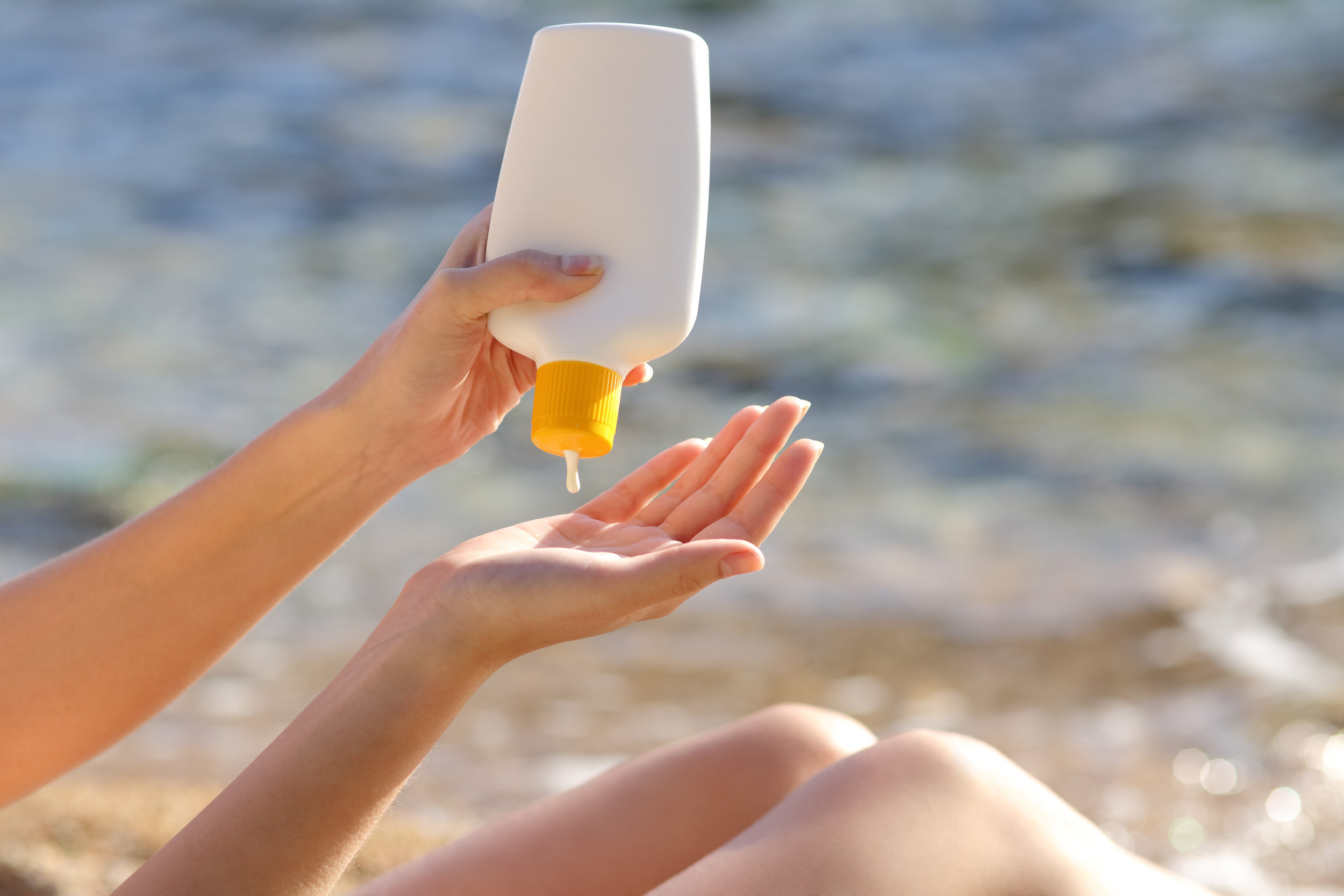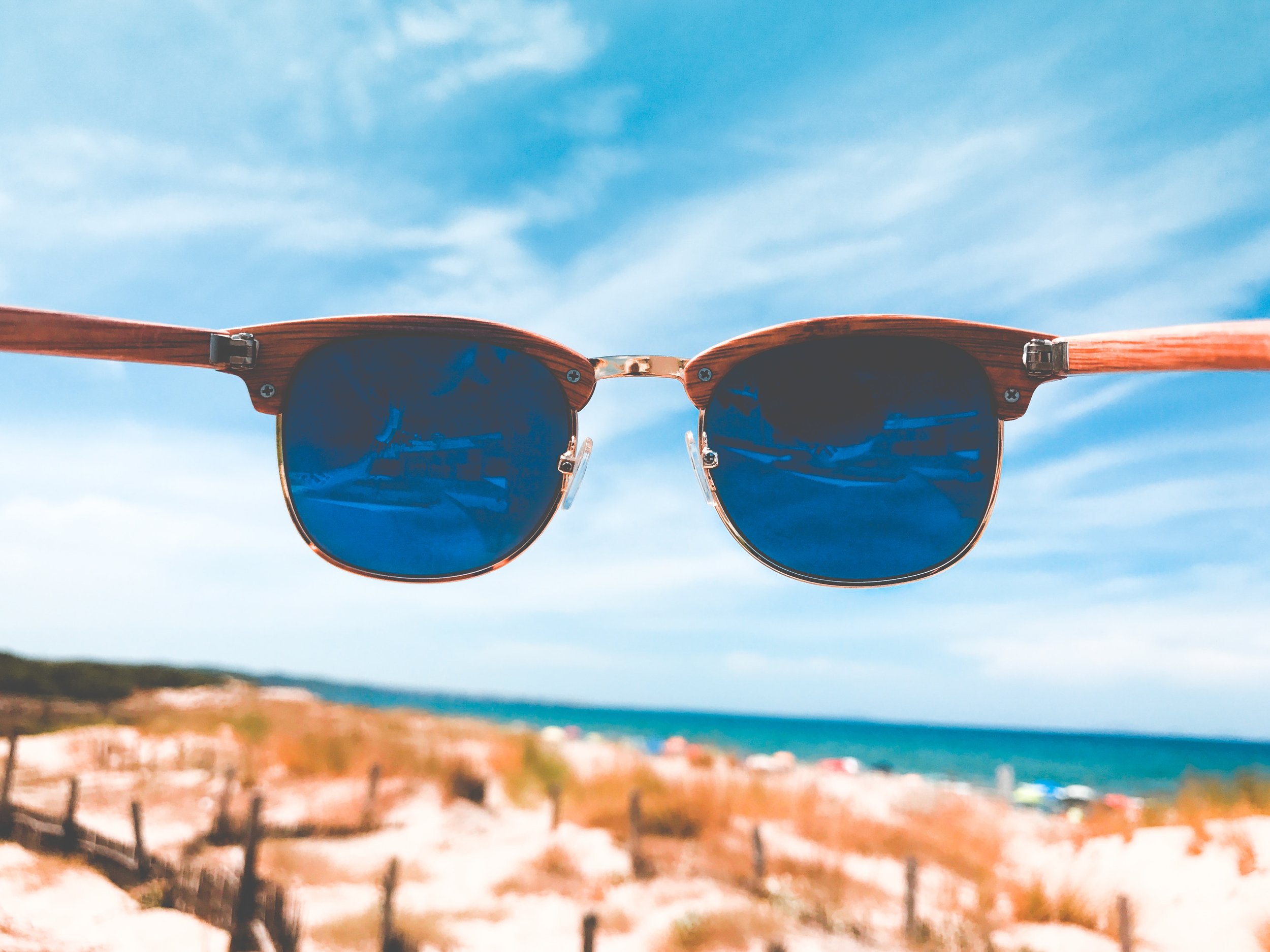Ready, Guard, and Apply: Basics of Sun Protection
by JAMIE SHIN
Many people believe that sun protection is only for the summer. In fact, fewer than 15% of men and 30% of women in the United States apply sunscreen on a daily basis. This, however, may be a reason why 5 million Americans are still treated for skin cancer every year. [1] Skin cancer is highly correlated with prolonged, intense exposure to the UV rays, but with daily sun protection, the risk of the disease can be significantly reduced. Hence, it is important to use sun protection regardless of the time of the year. There are many different methods of sun protection, from sunscreen and sunglasses, to parasols and sun hats. How, then, do we know which one most effectively protects us from the sun? Read on to find out!
BACKGROUND
In Los Angeles, where the sun shines nearly everyday of the year, sun exposure is an inseparable element of our daily lives. While some amounts of time spent in the sun is healthy, overexposure to sunlight can harm our skin, eyes, and even our immune system. There are two UV rays that represent major risk factors for skin cancer specifically: UVA and UVB rays. UVA rays damage and cause aging in skin cells, whereas UVB rays cause direct damage to the DNA of the skin cells and induce sunburns. These UV rays are merciless towards unprotected skin. Thus, by educating ourselves about the different forms of sun protection, we can then make informed decisions regarding what kind of sun protection to choose under a given circumstance.
SUNSCREEN
chemical sunscreen
Chemical sunscreen is composed of organic compounds like oxybenzone, octinoxate, and avobenzone. They interact with one another to break down the sun’s UV rays into heat, and then to release the heat from the skin.
Pros
Chemical sunscreen tends to be thinner and easier to spread on skin. It is especially compatible when worn together with makeup because of its moist and easily applicable formula.
Compared to physical sunscreen, less chemical sunscreen is needed for the same effect. This is because chemical sunscreen can be thoroughly applied to the skin, thereby preventing spaces from forming between sunscreen molecules.
Cons
Chemical sunscreen may lead to a higher internal skin temperature because it absorbs heat before releasing it from the skin. [2] This can increase the risk of skin discoloration and brown spots, or even worsen already existing brown spots.
It must be applied at least 20 minutes prior to sun exposure in order for the sunscreen to be fully absorbed, and thus provide effective sun protection.
It requires more frequent reapplication because its effectiveness in sun protection gradually diminishes in the presence of direct UV rays.
It may lead to irritation and stinging, especially for people with sensitive skin or dry skin with a damaged moisture barrier, due to its complex mixture of chemical ingredients. It is also more likely to clog pores among people with oily skin.
physical sunscreen
Physical sunscreen is made of active mineral ingredients such as titanium oxide and zinc oxide that physically deflect and scatter damaging UV rays from the skin. Simply put, this type of sunscreen blocks the sun by sitting on top of the skin.
Pros
Physical sunscreen offers protection from both UVA and UVB rays because it contains a broad electromagnetic spectrum.
Unlike chemical sunscreen, physical sunscreen does not have to be absorbed into the skin for it to be effective, making its application quicker.
Its effectiveness against direct UV rays lasts longer as long as it is not exposed to excessive moisture from sweating or getting wet.
In comparison to chemical sunscreen, the more simple components of physical sunscreen such as titanium dioxide and zinc oxide are less likely to cause irritations for sensitive skin and skin easily activated by heat. These components deflect the heat and energy exerted by the sun to prevent them from irritating the skin. Physical sunscreen is also less likely to clog pores, even for people with oily skin.
It generally has a longer shelf life.
Cons
Physical sunscreen often leaves a chalky white cast on top of the skin because its thicker formula makes it difficult to blend. Therefore, it is less compatible with makeup.
Even though it has a longer-lasting formula, physical sunscreen can still rub off, sweat off, and rinse off.
If not applied generously and accurately, it is less protective because the sun’s UV rays can easily penetrate through unprotected areas.
SUNGLASSES
Although nearly three-quarter of Americans are concerned about the potential eye damage that sun exposure can change, only 31% have reported that they use sunglasses to protect their eyes every time they go outside. [3] Moreover, majority of American consumers base their sunglass purchase solely on style and comfort rather than checking that the lenses are UVA and UVB protective. [3] Prolonged exposure to UV rays can lead to a wide range of symptoms, from as minor as mild irritation in the eyes to as severe as cataracts. [3] However, just by wearing sunglasses, we can block 99 to 100 percent of UVA and UVB rays, and can even screen out 75 to 90 percent of visible light. [4] The extent to which a pair of sunglasses can effectively protect our eyes from the sun is, of course, largely dependent on the lenses themselves.
different types of lens
In comparison to non-polarized sunglasses, polarized sunglasses eliminate the glare that bounces off water or any other surface. For example, when you are out at the beach, polarized sunglasses protect your eyes from the glare bouncing off the water which can cause blurry vision. They even boost depth and color perception, enabling people to minimize eye strain while enhancing visual clarity and reducing glare. [5] However, polarized lenses do not offer adequate protection against the sun’s UV rays, unless they are treated with a special UV protection-coated film like the sunglasses with UV protection. [5] Only when the sunglasses have UV protection can they provide protection from the dangerous UV rays reflecting off of surfaces we encounter in daily life such as buildings and snow. To maximize protection from exposure to UV rays, it is best to look for sunglasses with lenses of 400 UV protection with wraparound frames that can limit sunlight from irritating the eyes. [5]
different prices of lens
Although price alone does not determine the quality of a pair of sunglasses, its effectiveness depends heavily on the quality of the lenses. Generally speaking, cheap lenses are not coated with UV protection film, and thus cannot provide adequate protection against the sun’s UV rays. Lenses with poor optical clarity or those made from easily damageable material can even be a potential threat to the eyes. Although there is no definite relationship between the price and the quality of the sunglasses, it is crucial to pay attention to the materials used to make the sunglass lenses rather than the trendiness of the design alone.
PARASOLS AND SUN HATS
There are other methods of sun protection in addition to sunscreen and sunglasses. Umbrellas, for example, are no longer only meant for rainy days. Parasols, or sun umbrellas, are designed to provide protection from the sun by blocking 98 percent or more of direct UV rays when the Ultraviolet Protection Factor (UPF) is beyond 50+. [6] Although it may seem silly carrying around parasols at first, they are one of the most practical ways to protect the skin from sun damage and to provide cool shade when in the outdoors.
Similarly, sun hats can provide direct protection from the stinging rays of the sun. Because skin cancer occurs most commonly on the head, areas such as the face, neck, and ear require extra protection. [6] Hats with large brims, especially those with brims facing downward, offer the greatest amount of UV protection. [6] Baseball hats, on the other hand, do not provide adequate protection, thereby leaving the cheeks and chins unprotected and exposed. In fact, the amount of shade provided by a baseball hat is essentially the same as the amount when we use our hands to create temporary shade. Thus, wider hats are clearly a smarter choice when it comes to protecting our skin against the sun, or perhaps experimenting with a new fashion trend.
BOTTOM LINE
We often mistake sun protection to be a subject only applicable to the blazing sun of summer. Protection against the sun is an everyday task to keep in mind, whether it is a sunny day in July or a cloudy day in January. No one is immune to the dangers of overexposure to the sun. Therefore, finding the right pair of sunglasses and tube of sunscreen, not to mention a go-to sun hat or parasol, can take us one step away from the damages of the sun.
HOT TIP
check the UV Index
Using simple weather applications on our phones, we can easily check the daily UV index. The UV index can range from as low as 1 or as high as 11 and above. According to the US Environmental Protection Agency, depending on the level of UV index, people should provide different levels of protection against the sun. For example, when the UV index is between 3-5, it is considered moderate and applying generous amounts of sunscreen every couple hours and wearing UV protected sunglasses provides adequate protection. [6] However, when the UV index is between 8 and 10, it is considered very high. [6] Therefore, when outside, people are advised to wear wide brimmed hats and minimize activity between 10 a.m. and 4 p.m. [6]
REFERENCES
1. “Sunscreen use among adults in the United States.” cdc.gov. (2015).
2. “Chemical vs. physical sunscreens: Pros and cons.” reneerouleau.com. (2014).
3. “Spare your sight: Using shades for protection and style.” thevisioncouncil.org. (2016).
4. “When you're choosing sunglasses, does UV protection matter?” mayoclinic.org. (2016).
5. “Polarized sunglasses vs. UV protection sunglasses.” fashioneyecenter.com. (2016).
6. “If you can see the sunlight, seek the shade.” skincancer.org. (2012).








